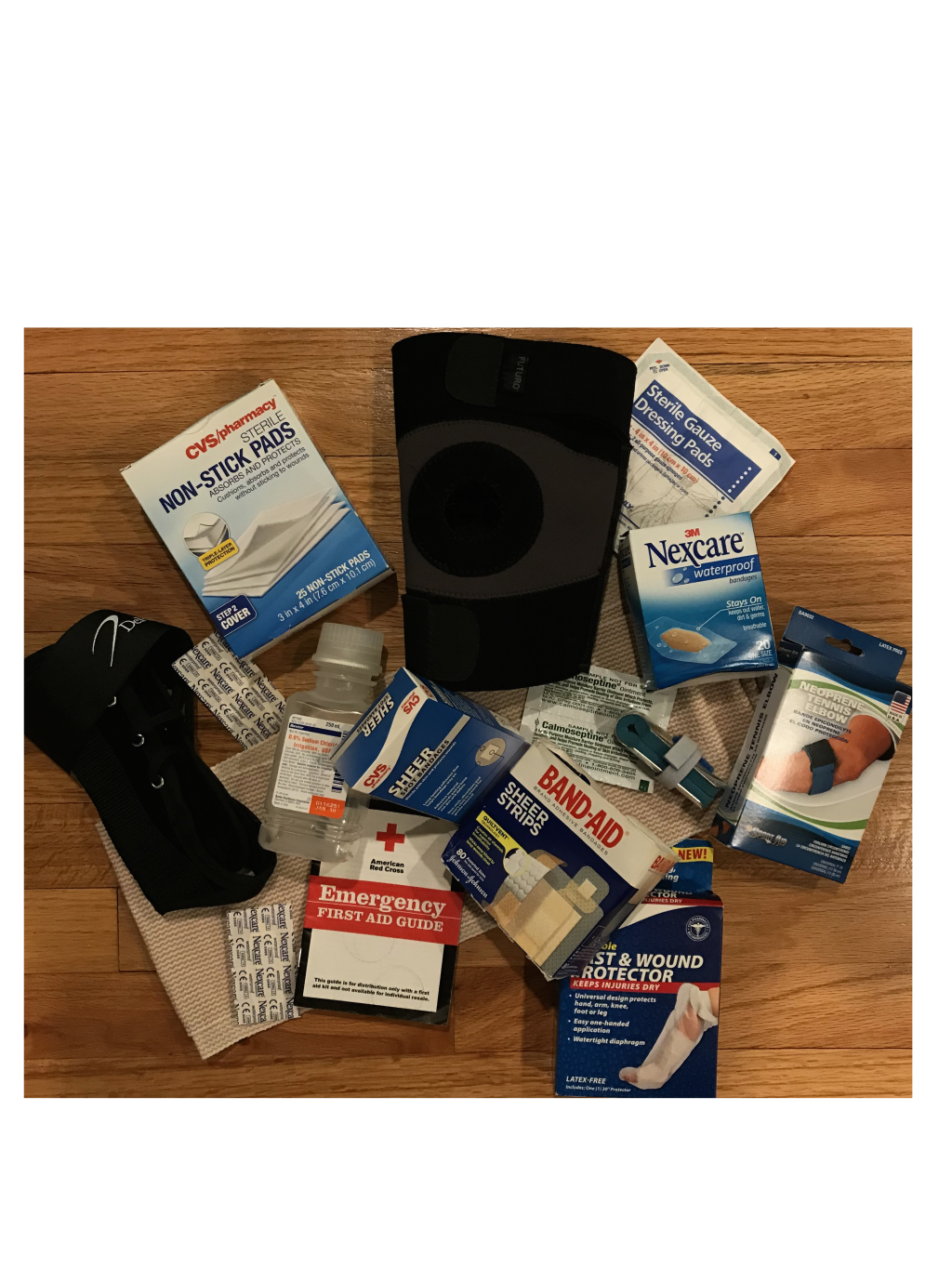It all happens in an instant. A couple of seconds precipitating a bad hit, fall, or step can define months of healing that result from a serious injury. All of a sudden the dynamic of your life completely changes. Weeks are no longer defined by practices, games, and races, but by appointments, physical therapy, and potentially a surgery. Injured athletes are often left picking up the pieces of shattered visions of what their season could have been.
I myself have suffered all of the woes of being injured and would like to think that I have learned from my experiences. During my freshman year, I broke my leg and was sidelined from the ski team for the entire season. I needed two surgeries, a month in a wheelchair, and many months in PT and crutches. All the while, the ski team had an amazing season, with the girls team winning first in the state. I was amazed and proud of how the team performed, but was saddened by the fact that I could not share fully in their achievements.
By the time ski season rolled around again this year, I was excited to be able to participate on the team, fueled by my desire to make up for lost time. During the first practice of the year I fell, broke my thumb, and tore a ligament. I needed surgery would put me out of all sports for at least 8 weeks, missing the entire ski season once again. I was shocked.
Having been sidelined twice by injuries, I identify with all athletes who have been in similar situations. An injury is the one of the toughest things for anyone to go through, but the pain is especially acute when it renders you unable to do something you enjoy.
Physically, the recovery process gets harder before it gets easier. Pain gets progressively worse after the injury or a surgery for a couple days, then things start to quickly improve. As the injury begins to heal, you gain more mobility and might remove a cast or stop using crutches. These moments can feel like getting set back to square one because pain can return, and you have to learn how to deal with your new situation all over again. In actuality, the pain and the difficulties that come with something like discontinuing the use of crutches are just bumps along the road.
The more pressing challenge that comes with an injury is the mental impact it takes on athletes. I think about the thought process that comes with an injury as a three step process similar to the “5 Stages of Grief.” Right after an injury, people often replay the moments leading up to the accident in their heads and ask themselves “What if I didn’t go for that ball?” or “What if I just took it easy?” Although it’s difficult to not blame yourself or someone else for causing the injury, such thinking is not conducive to healing. The best thing for someone who is injured to do is to focus on things one day at a time and look at the bright side of the situation. If you only look at the long road ahead, and you don’t find any light in the situation, you’ll drive yourself mad.
The second part of the thought process comes with watching the team from the sideline. It can be difficult to stay committed to the team when you can’t participate. Watching other people continue their season can be bittersweet because, as much as someone wants their team to succeed, injured athletes sometimes can feel like they are being left behind. The only way to deter this nagging sense of resentment is to participate to the best of your ability. Cheering on your teammates and helping out allows for you to share in the team’s success more. This participation allows injured athletes to take part in the win, so that sense of sadness is not present.
Finally, trying to push yourself too hard, too early, can have adverse of effects on your physical health. This confuses many athletes. Teammates, coaches, and parents of players who are hurt sometimes try to supersede the authority and advice of the doctor, claiming that the doctor is being too cautious. With good intentions, these people may push athletes, or the athlete may push him/herself, to participate before they are completely healed. The most devastating impact of this would be to get injured again, but more seriously. For example, an injury like a concussion that can not be seen from the outside and has often been delegitimized would be a likely situation in which an athlete might be pressured to participate. The result of this is if an athlete who is still concussed gets another concussion, they can develop Second Impact Syndrome. S.I.S. can have an impact on the brain that is many times more devastating than a single concussion. This truth of an exponentially negative effect coming from repeated injuries is true across the board. You need to listen to your doctor if you want to heal properly; not the advice that others give you. The doctor knows the injury and what the long term implications are if the injury is not healed. Also, you have to fight your own desire to get back onto the field, knowing that if you do, the injury could be many times worse. This mental head game is a hard one to win, but it is far better to endure the comments about your “unnecessary” lack of participation than it is to have permanent damage to your body.
The most important thing to remember is that healing takes time. There is no jumpstarting anything so stay patient because your sport is not going anywhere. It will be waiting for you when you are healed and ready to take the field once more.
Eddie O’Keefe
sports editor
Graphics: Anika Tsapatsaris

